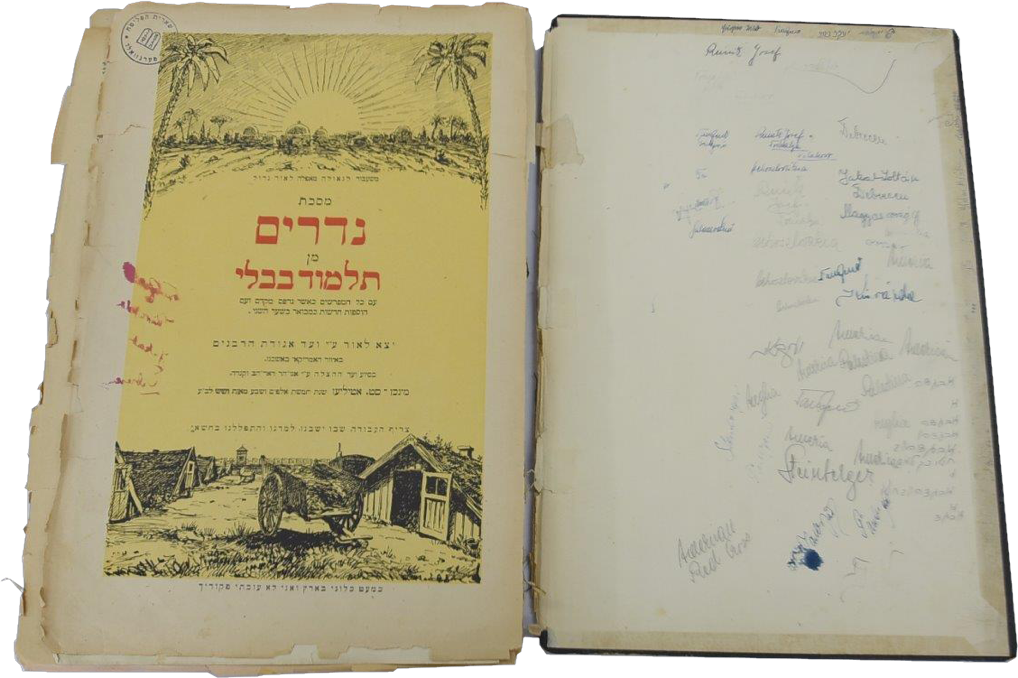
Foehrenwald was one of the largest displaced persons camps on German soil where observant Jews lived a full religious life. The most famous religious figure who lived in this camp was the Klausenberger Rebbe z”l, who established the Shearit HaPleta Yeshiva (Survivors’ Yeshiva) in the camp.
“With much effort, we were able to find a printing house who can print books by means of photography,” read the preface to the book.
“We only have the Mishnaic tractates of Kedoshim and Nedarim in one volume, almost like new, and so we decided to photograph and print these tractates and distribute them amongst the survivors in the Ashkenaz exile (Germany). We have tried to print it for the purpose of beauty and elegance.”
This volume, which will be presented in the permanent exhibition of the new museum, conveys the thirst and passion of the Jews for Torah, even after losing their dearest loved ones. Despite their sorrow and grief and the despair and despondency that enveloped the refugees, survivors of the Valley of Death, these dear Jews gathered together and shook off the ashes of their destruction and grief and eagerly embraced the words of the Talmudic sages Abaye and Rava, that were specially printed for them.
The rebirth of the world of Torah postwar and its blossoming into what we see today, was planted then, in the days when dark was mixed with light, in the period of panic when the world had not yet comprehended the results of the war that had torn it apart. The single volume of Gemara that changed hands around the clock, and which satiated Jews who had nothing left in their world, is a sign of and a testimony to the pulsating spirit of the Jewish people in all its hardships and vicissitudes.
Testimonies from the Introduction
Additional moving lines from the preface accurately describe the feelings of those days and the spiritually difficult situation that prevailed all over Europe: “After our spirit returned to us a little, in the immediate post liberation days, we immediately felt the lack of books for the People of the Book. The evil ones who destroyed and burned the Jews of Europe, also tried to not leave behind any Hebrew books, and let the Jews be burned wrapped in the Torah.”
“The death penalty was in place for anyone who owned a siddur (prayer book), tefillin, or other books. Our enemies were wise by not only trying to destroy us physically but could hurt us as long as we still had the spirit of life within us. They found that confiscating books from the People of the Book creates a deep long-lasting wound in the soul of the Jews.”
“All Jewish books were taken to be processed into paper or used in some other despicable way. In the labour camp, among two thousand Jews, we only found a few pairs of tefillin and a few siddurs, which were watched over by their owners with true dedication. This being so, following liberation, our yearning and thirst for books was great. Yeshivas were founded but had no material to learn from. In beit midrashes (study halls), there were no books to study privately or publicly with others. We did not receive the books from overseas quickly, and when a book came, there were hundreds of hands reaching for it. This was what encouraged us to go and print these tractates.”














